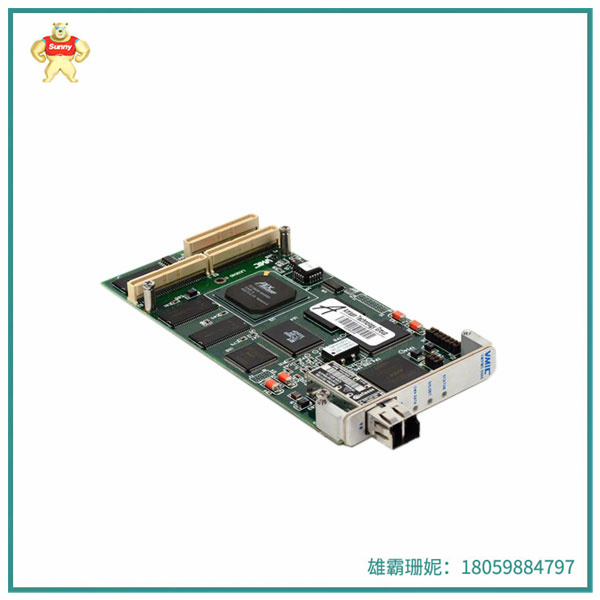
Abaco Systems / VMIC PMC-5565PIORC-110000 反射式存储器 PMC 节点卡 - 符合 RoHS 规范
配置: • 内存:128 MB
• 传输模式:多模
• RC:符合 RoHS 标准
• PIO:提供改进的 PIO 读取性能
部件号: 332-9367755565-110000 H
产品代码:
5998-01-570-0073, 5998015700073
问题:
什么是反射内存?如何使用反射内存?
解答:
要让分布式系统如同单个系统一样工作,必须在系统组件之间共享数据。这是让不同部分可以一起工作的关键要素。通常可以使用反射内存接口实现。
反射内存网络是实时本地局域网(LAN),每个计算机在其中都拥有共享内存集合的最新本地复本。这些专用网络是为了提供高确定性的数据通信而专门设 计的。可以提供多种分布式仿真和工业控制应用所需的高级定时性能。反射内存网络获益于通用数据网络,是不同需求推动下产生的完全独立的技术,适用于要求确 定性、简单实现和软件负荷小的应用程序。
反射内存提供了在多个目标之间共享数据的能力,并且满足了整个系统的性能与确定性需求。使用反射内存,仿真模型可以分别在不同的目标系统上同时执行。输入与输出数值通过反射内存在不同目标系统上共享。
目前,GE智能平台反射内存板卡本地支持NI VeriStand 2010及其后的版本。NI VeriStand的许多组件可以使用反射内存无缝创建多目标系统。此外,NI VeriStand将数据在目标之间自动分布式化用于不同的用途。例如,您可以配置激励(测试)档案,运行在需要目标B数据的目标A上。NI VeriStand在目标之间自动创建并激活链路获取数据。这可以在无需用户配置的情况下自动完成。
反射式存储器(Reflective Memory)是一种高速的共享存储器技术,它可以在计算机系统中实现高速的数据传输和共享。
VMIC PMC-5565PIORC-110000 反射式存储器通常由一组存储器模块和一个反射式网络组成。每个存储器模块都包含自己的存储器和一个用于与反射式网络通信的接口。反射式网络则用于连接所有的存储器模块,并实现它们之间的数据传输和共享。
VMIC PMC-5565PIORC-110000反反射式存储器的工作原理是:当一个处理器需要访问某个存储器模块中的数据时,它会将请求发送到反射式网络。反射式网络会将请求转发给相应的存储器模块,然后该存储器模块会将数据发送回反射式网络,最后反射式网络将数据转发给请求的处理器。
反射式存储器的优点包括高速、低延迟、高带宽、可扩展性好等。它通常用于需要高速数据传输和共享的场合,如高性能计算机、数据中心、通信系统等。

Abaco Systems/VMIC PMC-5565PIORC-110000 Reflective Memory PMC Node Card - RoHS compliant
Configuration: • Memory: 128 MB
• Transmission mode: multi-mode
• RC: RoHS compliant
• PIO: Provides improved PIO read performance
Part number: 332-9367755565-110000 H
Product Code:
5998-01-570-0073, 5998015700073
Question:
What is reflected memory? How do I use reflected memory?
Answer:
For a distributed system to function as a single system, data must be shared among system components. This is the key to making the different parts work together. This can usually be implemented using a reflected memory interface.
A reflective memory network is a real-time local area network (LAN) in which each computer has the latest local copy of a shared memory collection. These private networks are designed to provide highly deterministic data communication. It provides advanced timing performance required for a variety of distributed simulation and industrial control applications. Reflecting memory networks benefit from general data networks and are a completely independent technology driven by different needs, suitable for applications requiring certainty, simple implementation and low software load.
Reflected memory provides the ability to share data between multiple targets and meets the performance and deterministic requirements of the entire system. Using reflected memory, simulation models can be executed simultaneously on different target systems. Input and output values are shared across different target systems via reflection.
Currently, GE Smart Platform reflective memory boards natively support NI VeriStand 2010 and later versions. Many components of NI VeriStand can seamlessly create multi-target systems using reflected memory. In addition, NI VeriStand automatically distributes data between targets for different purposes. For example, you can configure incentive (test) files to run on Target A that requires data from Target B. NI VeriStand automatically creates and activates links between targets to obtain data. This can be done automatically without the need for user configuration.
Reflective Memory is a high-speed shared memory technology that enables high-speed data transmission and sharing in computer systems.
The VMIC PMC-5565PIORC-110000 anti-reflection memory usually consists of a set of memory modules and a reflection network. Each memory module contains its own memory and an interface for communicating with the reflective network. The reflective network is used to connect all memory modules and realize data transmission and sharing between them.
The VMIC PMC-5565PIORC-110000 antireflective memory works by saying that when a processor needs to access data in a memory module, it sends the request to the reflective network. The reflective network forwards the request to the appropriate memory module, which then sends the data back to the reflective network, and the reflective network forwards the data to the requesting processor.
The advantages of reflective memory include high speed, low latency, high bandwidth, and good scalability. It is commonly used in applications that require high-speed data transmission and sharing, such as high-performance computers, data centers, and communication systems.

| GE | IS200STCIH6AED |
| GE | IS200TBAIH1CCC |
| GE | IS200TBCIH2CAA |
| GE | IS200TBCIS2CCD |
| GE | IS200TDBTH6ABC |
| GE | IS200TDBTH6ACD |
| GE | IS200TPROH1BCB |
| GE | IS200TPROS1CBB |
| GE | IS200TREAH2AED |
| GE | IS200TREGH1BEC |
| GE | IS200TRPAH2AHE |
| GE | IS200TSVCH1AJE |
| GE | IS200TTURH1CFD |
| GE | IS200TVBAH2ACC |
| GE | IS200TVIBH2BBB |
| GE | IS200VAICH1DAB |
| GE | IS200VCRCH1B |
| GE | IS200VRTDH1D |
| GE | IS200VTCCH1CBB |
| GE | IS200VTURH2BAC |
| GE | IS200WETBH1ABA |
| GE | IS200WNPSH1ABA |
| GE | VMIVME-7750 |
| GE | VMIVME-7750-734001 |
Copyright © 2022-2024 厦门雄霸电子商务有限公司 版权所有 备案号:闽ICP备14012685号-33